My
List |
Addition Date
|
Target
|
Mission
|
Instrument
|
Size
|

|
2008-04-24 |
|
Hubble Space Telescope
|
WFPC2
|
3271x1828x3 |
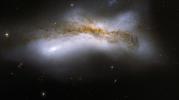
|
-
PIA10390:
-
NGC 520
Full Resolution:
TIFF
(17.94 MB)
JPEG
(736.3 kB)
|

|
2008-04-24 |
|
Hubble Space Telescope
|
WFPC2
|
1660x1660x3 |

|
-
PIA10389:
-
AM 1316-241
Full Resolution:
TIFF
(8.28 MB)
JPEG
(365.6 kB)
|

|
2008-04-24 |
|
Hubble Space Telescope
|
WFPC2
|
1669x1669x3 |
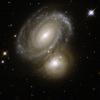
|
-
PIA10388:
-
AM 0500-620 - Spiral Arms and Bright Knots
Full Resolution:
TIFF
(8.37 MB)
JPEG
(305.4 kB)
|

|
2008-04-24 |
|
Hubble Space Telescope
|
WFPC2
|
1052x1052x3 |
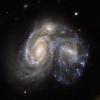
|
-
PIA10387:
-
Collision Between Two Spiral Galaxies
Full Resolution:
TIFF
(3.325 MB)
JPEG
(97.32 kB)
|

|
2008-04-24 |
|
Hubble Space Telescope
|
WFPC2
|
2289x2289x3 |
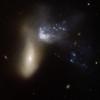
|
-
PIA10386:
-
NGC 454
Full Resolution:
TIFF
(15.74 MB)
JPEG
(638.6 kB)
|

|
2008-04-24 |
|
Hubble Space Telescope
|
WFPC2
|
1027x1027x3 |
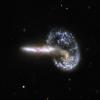
|
-
PIA10385:
-
Arp 148& - Mayall's Object
Full Resolution:
TIFF
(3.169 MB)
JPEG
(75.74 kB)
|

|
2008-03-27 |
HD 189733b
|
Hubble Space Telescope
|
NICMOS
|
4000x3000x3 |
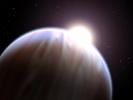
|
-
PIA10363:
-
Astronomers Detect First Organic Molecule on an Exoplanet (Artist's Concept)
Full Resolution:
TIFF
(36 MB)
JPEG
(282.5 kB)
|

|
2008-02-12 |
Abell 1689
|
Hubble Space Telescope
Spitzer Space Telescope
|
Advanced Camera for Surveys
Infrared Array Camera (IRAC)
NICMOS
|
3813x3367x3 |
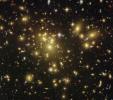
|
-
PIA10237:
-
Astronomers Uncover One of the Youngest and Brightest Galaxies in the Early Universe
Full Resolution:
TIFF
(38.52 MB)
JPEG
(3.231 MB)
|

|
2008-01-25 |
Jupiter
|
Hubble Space Telescope
|
Visible Light
|
2000x2682x3 |

|
-
PIA10224:
-
Jupiter Eruptions
Full Resolution:
TIFF
(16.11 MB)
JPEG
(290.4 kB)
|

|
2007-06-01 |
Messier 81
|
Galaxy Evolution Explorer (GALEX)
Hubble Space Telescope
Spitzer Space Telescope
|
GALEX Telescope
Infrared Array Camera (IRAC)
Visible Light
|
3180x2456x3 |
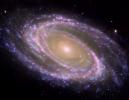
|
-
PIA09579:
-
M81 Galaxy is Pretty in Pink
Full Resolution:
TIFF
(23.43 MB)
JPEG
(1.061 MB)
|

|
2007-02-13 |
|
Hubble Space Telescope
|
WFPC2
|
1241x1207x3 |

|
-
PIA09194:
-
The Colorful Demise of a Sun-like Star
Full Resolution:
TIFF
(4.499 MB)
JPEG
(153.6 kB)
|

|
2007-01-09 |
|
Hubble Space Telescope
Spitzer Space Telescope
|
IRAC
Multiband Imaging Photometer (MIPS)
|
2394x2571x3 |

|
-
PIA09109:
-
Unwrapping the Pillars
Full Resolution:
TIFF
(18.49 MB)
JPEG
(578.7 kB)
|

|
2007-01-09 |
|
Hubble Space Telescope
Spitzer Space Telescope
|
IRAC
Multiband Imaging Photometer (MIPS)
|
2100x2400x3 |

|
-
PIA09107:
-
Cosmic Epic Unfolds in Infrared
Full Resolution:
TIFF
(15.14 MB)
JPEG
(890.6 kB)
|

|
2006-07-21 |
|
Hubble Space Telescope
Spitzer Space Telescope
|
IRAC
Visible Light
|
900x360x3 |
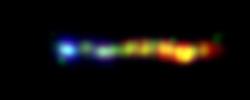
|
-
PIA08617:
-
Black Hole Spills Kaleidoscope of Color
Full Resolution:
TIFF
(973.2 kB)
JPEG
(10.56 kB)
|

|
2006-06-06 |
|
Hubble Space Telescope
Spitzer Space Telescope
|
IRAC
Multiband Imaging Photometer (MIPS)
|
1778x1778x3 |
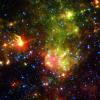
|
-
PIA08516:
-
Dusty Death of a Massive Star
Full Resolution:
TIFF
(9.498 MB)
JPEG
(553.1 kB)
|

|
2006-04-26 |
|
Hubble Space Telescope
Spitzer Space Telescope
|
IRAC
Visible Light
|
2905x1486x3 |
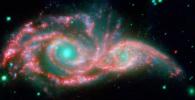
|
-
PIA08097:
-
Eyes in the Sky
Full Resolution:
TIFF
(12.95 MB)
JPEG
(560.3 kB)
|

|
2006-04-24 |
M82 Galaxy
|
Hubble Space Telescope
Spitzer Space Telescope
|
Chandra X-ray Telescope
Infrared Array Camera (IRAC)
Visible Light
|
640x480x3 |

|
-
PIA08093:
-
Great Observatories Present Rainbow of a Galaxy

Full Resolution:
TIFF
(45.01 MB)
JPEG
(799.8 kB)
|

|
2006-04-11 |
|
Hubble Space Telescope
|
|
4800x3600x3 |

|
-
PIA17801:
-
Hubble Finds 'Tenth Planet' is Slightly Larger than Pluto (Artist Concept)
Full Resolution:
TIFF
(51.87 MB)
JPEG
(1.187 MB)
|

|
2006-01-19 |
Helix Nebula
|
Hubble Space Telescope
Spitzer Space Telescope
|
Advanced Camera for Surveys
Infrared Array Camera (IRAC)
|
3125x3497x3 |

|
-
PIA03678:
-
The Mark of a Dying Star
Full Resolution:
TIFF
(32.78 MB)
JPEG
(1.165 MB)
|

|
2006-01-11 |
Cartwheel Galaxy
|
Galaxy Evolution Explorer (GALEX)
Hubble Space Telescope
Spitzer Space Telescope
|
Chandra X-ray Telescope
GALEX Telescope
Infrared Array Camera (IRAC)
Visible Light
|
1500x1500x3 |
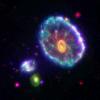
|
-
PIA03296:
-
A Stellar Ripple
Full Resolution:
TIFF
(6.762 MB)
JPEG
(201.2 kB)
|

|
2005-12-01 |
Crab Nebula
|
Hubble Space Telescope
|
WFPC2
|
3864x3864x3 |
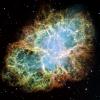
|
-
PIA03606:
-
Most Detailed Image of the Crab Nebula
Full Resolution:
TIFF
(44.79 MB)
JPEG
(1.926 MB)
|

|
2005-11-02 |
|
Hubble Space Telescope
|
WFPC2
|
1518x1497x3 |
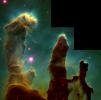
|
-
PIA12108:
-
Embryonic Stars Emerge from Interstellar "Eggs"
Full Resolution:
TIFF
(6.83 MB)
JPEG
(195 kB)
|

|
2005-09-27 |
HUDF-JD2
|
Hubble Space Telescope
Spitzer Space Telescope
|
IRAC
Visible Light
|
2699x1838x3 |
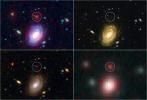
|
-
PIA03542:
-
Big Galaxy in Baby Universe
Full Resolution:
TIFF
(14.9 MB)
JPEG
(647.4 kB)
|

|
2005-09-07 |
Ceres
|
Hubble Space Telescope
|
Advanced Camera for Surveys
|
250x250x3 |
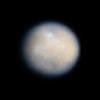
|
-
PIA10235:
-
Color View of Ceres
Full Resolution:
TIFF
(187.9 kB)
JPEG
(3.807 kB)
|

|
2005-07-04 |
Tempel 1
|
Hubble Space Telescope
|
Hubble Space Telescope
|
800x350x1 |
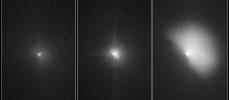
|
-
PIA02122:
-
Hubble Witnesses Comet Crash
Full Resolution:
TIFF
(280.5 kB)
JPEG
(22.82 kB)
|

|
2005-06-10 |
Cassiopeia A
|
Hubble Space Telescope
Spitzer Space Telescope
|
IRAC
Visible Light
Chandra X-ray Telescope
|
1835x1348x3 |

|
-
PIA03519:
-
Cassiopeia A: Death Becomes Her

Full Resolution:
TIFF
(7.432 MB)
JPEG
(263.6 kB)
|

|
2005-05-05 |
|
Hubble Space Telescope
|
Visible Light
|
3000x1681x3 |
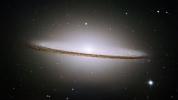
|
-
PIA15226:
-
Hubble Spies Spectacular Sombrero
Full Resolution:
TIFF
(15.13 MB)
JPEG
(427.2 kB)
|

|
2005-05-04 |
Messier 104
|
Hubble Space Telescope
Spitzer Space Telescope
|
IRAC
Visible Light
|
3000x1681x3 |
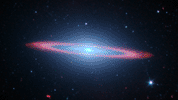
|
-
PIA07899:
-
Spitzer Spies Spectacular Sombrero

Full Resolution:
TIFF
(15.13 MB)
JPEG
(214.2 kB)
|

|
2004-10-06 |
|
Hubble Space Telescope
|
Advanced Camera for Surveys
|
3622x3445x3 |

|
-
PIA06909:
-
Kepler's Supernova Remnant: A View from Hubble Space Telescope
Full Resolution:
TIFF
(30.15 MB)
JPEG
(2.364 MB)
|

|
2004-10-06 |
|
Hubble Space Telescope
Spitzer Space Telescope
|
Chandra X-ray Telescope
Hubble Space Telescope
Spitzer Space Telescope
|
750x750x3 |
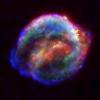
|
-
PIA06907:
-
Three Great Eyes on Kepler's Supernova
Remnant
Full Resolution:
TIFF
(1.453 MB)
JPEG
(33.78 kB)
|

|
2004-09-09 |
|
Hubble Space Telescope
|
Advanced Camera for Surveys
|
1417x1417x3 |
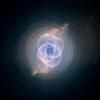
|
-
PIA16009:
-
Dying Star Creates Fantasy-like Sculpture of Gas and Dust
Full Resolution:
TIFF
(5.322 MB)
JPEG
(132.9 kB)
|

|
2004-05-26 |
Saturn
|
Hubble Space Telescope
|
WFPC2
|
2814x1458x3 |
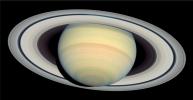
|
-
PIA05982:
-
Saturn from Far and Near (Hubble Space Telescope)
Full Resolution:
TIFF
(6.194 MB)
JPEG
(198 kB)
|

|
2004-05-26 |
Saturn
|
Cassini-Huygens
Hubble Space Telescope
|
ISS - Narrow Angle
Wide Field Planetary Camera 2
|
540x760x3 |

|
-
PIA05981:
-
Saturn from Far and Near
Full Resolution:
TIFF
(720.3 kB)
JPEG
(32.05 kB)
|

|
2004-02-03 |
|
Hubble Space Telescope
|
WFPC2
|
1065x771x3 |

|
-
PIA05202:
-
Supernova Blast Bonanza in Nearby Galaxy
Full Resolution:
TIFF
(2.467 MB)
JPEG
(177.7 kB)
|

|
2003-09-05 |
Comet
|
Hubble Space Telescope
|
|
2400x1918x1 |
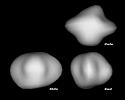
|
-
PIA17484:
-
3-D Models of Comet 67P/Churyumov-Gerasimenko's Nucleus
Full Resolution:
TIFF
(4.609 MB)
JPEG
(103 kB)
|

|
2003-07-03 |
|
Hubble Space Telescope
|
WFPC2
|
2603x2783x3 |

|
-
PIA04609:
-
Celestial Fireworks
Full Resolution:
TIFF
(13.8 MB)
JPEG
(871.3 kB)
|

|
2003-05-27 |
|
Hubble Space Telescope
|
WFPC2
|
612x792x3 |

|
-
PIA04533:
-
The Red Rectangle
Full Resolution:
TIFF
(870.7 kB)
JPEG
(38.33 kB)
|

|
2003-05-21 |
|
Hubble Space Telescope
|
WFPC2
|
869x444x3 |

|
-
PIA04277:
-
Hubble's View of a Dying Star
Full Resolution:
TIFF
(635.3 kB)
JPEG
(42.81 kB)
|

|
2003-02-11 |
Dumbbell Nebula
|
Hubble Space Telescope
|
WFPC2
|
1262x750x3 |
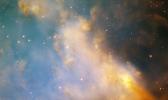
|
-
PIA04249:
-
Close-up of M27, the Dumbbell Nebula
Full Resolution:
TIFF
(2.843 MB)
JPEG
(75.6 kB)
|

|
2002-10-08 |
Jupiter
|
Galileo
Hubble Space Telescope
IRTF
|
WFPC2
|
650x300x3 |

|
-
PIA03864:
-
Cold Hole Over Jupiter's Pole
Full Resolution:
TIFF
(176.2 kB)
JPEG
(15.88 kB)
|

|
2001-10-13 |
Mars
|
Hubble Space Telescope
|
WFPC2
|
2826x1677x3 |
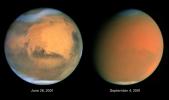
|
-
PIA03173:
-
Scientists Track "Perfect Storm" on Mars
Full Resolution:
TIFF
(7.452 MB)
JPEG
(168.7 kB)
|

|
2001-07-21 |
Saturn
|
Hubble Space Telescope
|
WFPC2
|
3000x1500x3 |
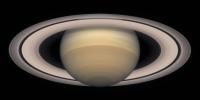
|
-
PIA03162:
-
A Change of Seasons on Saturn - October, 2000
Full Resolution:
TIFF
(5.81 MB)
JPEG
(156.4 kB)
|

|
2001-07-21 |
Saturn
|
Hubble Space Telescope
|
WFPC2
|
3000x1500x3 |

|
-
PIA03161:
-
A Change of Seasons on Saturn - October, 1999
Full Resolution:
TIFF
(13.51 MB)
JPEG
(150.5 kB)
|

|
2001-07-21 |
Saturn
|
Hubble Space Telescope
|
WFPC2
|
3000x1500x3 |
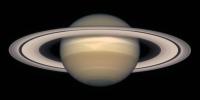
|
-
PIA03160:
-
A Change of Seasons on Saturn - October, 1998
Full Resolution:
TIFF
(4.54 MB)
JPEG
(140.8 kB)
|

|
2001-07-21 |
Saturn
|
Hubble Space Telescope
|
WFPC2
|
1152x576x3 |
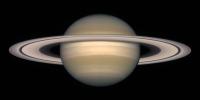
|
-
PIA03159:
-
A Change of Seasons on Saturn - October, 1997
Full Resolution:
TIFF
(695.1 kB)
JPEG
(27.48 kB)
|

|
2001-07-21 |
Saturn
|
Hubble Space Telescope
|
WFPC2
|
3000x1500x3 |
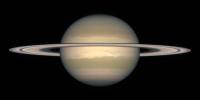
|
-
PIA03158:
-
A Change of Seasons on Saturn - October, 1996
Full Resolution:
TIFF
(3.053 MB)
JPEG
(120 kB)
|

|
2001-07-21 |
Saturn
|
Hubble Space Telescope
|
WFPC2
|
3000x2270x3 |

|
-
PIA03156:
-
A Change of Seasons on Saturn
Full Resolution:
TIFF
(4.312 MB)
JPEG
(220 kB)
|

|
2001-07-21 |
Jupiter
|
Hubble Space Telescope
|
WFPC2
|
752x417x3 |
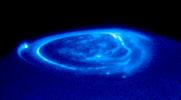
|
-
PIA03155:
-
Satellite Footprints Seen in Jupiter Aurora
Full Resolution:
TIFF
(202.4 kB)
JPEG
(34.06 kB)
|

|
2001-07-21 |
Mars
|
Hubble Space Telescope
|
WFPC2
|
500x500x3 |
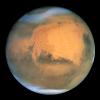
|
-
PIA03154:
-
Hubble Captures Best View of Mars Ever Obtained from Earth
Full Resolution:
TIFF
(463.3 kB)
JPEG
(17.85 kB)
|

|
2001-06-26 |
Mars
|
Hubble Space Telescope
|
|
500x500x3 |
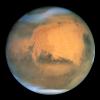
|
-
PIA18184:
-
Mars at 43 Million Miles From Earth
Full Resolution:
TIFF
(750.5 kB)
JPEG
(17.85 kB)
|

|
2000-10-23 |
Jupiter
|
Hubble Space Telescope
|
WFPC2
|
693x485x1 |

|
-
PIA02823:
-
Oval Storms Merging on Jupiter
Full Resolution:
TIFF
(223.6 kB)
JPEG
(43.14 kB)
|

|
2000-08-24 |
Uranus
|
Hubble Space Telescope
|
WFPC2
|
2400x2433x3 |

|
-
PIA02963:
-
Hubble Finds Many Bright Clouds on Uranus
Full Resolution:
TIFF
(3.277 MB)
JPEG
(170.8 kB)
|

|
2000-02-03 |
|
Hubble Space Telescope
|
WFPC2
|
2292x1480x3 |

|
-
PIA14444:
-
Light and Shadow in the Carina Nebula
Full Resolution:
TIFF
(10.18 MB)
JPEG
(419.5 kB)
|

|
1999-12-30 |
Edge-on Galaxy ESO 510 G13
|
Hubble Space Telescope
|
WFPC2
|
1435x732x3 |
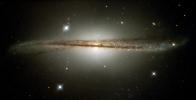
|
-
PIA04213:
-
Edge-on Galaxy
Full Resolution:
TIFF
(2.843 MB)
JPEG
(100.8 kB)
|

|
1999-12-15 |
Galaxy NGC 4013
|
Hubble Space Telescope
|
WFPC2
|
1041x1018x3 |
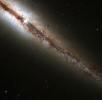
|
-
PIA04217:
-
Galaxy NGC 4013
Full Resolution:
TIFF
(2.811 MB)
JPEG
(74.83 kB)
|

|
1999-12-10 |
Hubble -V
|
Hubble Space Telescope
|
WFPC2
|
640x800x3 |

|
-
PIA04222:
-
Hubble-V
Full Resolution:
TIFF
(1.065 MB)
JPEG
(77.99 kB)
|

|
1999-12-10 |
Ant nebula
|
Hubble Space Telescope
|
WFPC2
|
1072x708x3 |
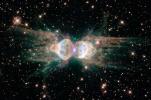
|
-
PIA04216:
-
Ant Nebula
Full Resolution:
TIFF
(2.008 MB)
JPEG
(143.4 kB)
|

|
1999-12-07 |
Galaxy NGC 3310
|
Hubble Space Telescope
|
WFPC2
|
849x933x3 |

|
-
PIA04229:
-
Starburst Galaxy NGC 3310
Full Resolution:
TIFF
(1.858 MB)
JPEG
(102.3 kB)
|

|
1999-12-04 |
Whirlpool Galaxy
|
Hubble Space Telescope
|
WFPC2
|
648x809x3 |

|
-
PIA04230:
-
Whirlpool Galaxy
Full Resolution:
TIFF
(1.575 MB)
JPEG
(84.45 kB)
|

|
1999-12-03 |
Ghost Head Nebula
|
Hubble Space Telescope
|
WFPC2
|
674x674x3 |

|
-
PIA04226:
-
Ghost Head Nebula
Full Resolution:
TIFF
(1.364 MB)
JPEG
(49.94 kB)
|

|
1999-12-03 |
N44C nebula
|
Hubble Space Telescope
|
WFPC2
|
1460x1502x3 |

|
-
PIA04225:
-
N44C Nebula
Full Resolution:
TIFF
(6.034 MB)
JPEG
(275.2 kB)
|

|
1999-12-03 |
Galaxy NGC 1850
|
Hubble Space Telescope
|
WFPC2
|
758x580x3 |
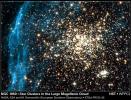
|
-
PIA04221:
-
Galaxy NGC 1850
Full Resolution:
TIFF
(1.321 MB)
JPEG
(140.6 kB)
|

|
1999-12-02 |
Rotten Egg Nebula
|
Hubble Space Telescope
|
WFPC2
|
843x794x3 |

|
-
PIA04228:
-
Rotten Egg Nebula
Full Resolution:
TIFF
(818.3 kB)
JPEG
(56.88 kB)
|

|
1999-12-02 |
Orion Nebula
|
Hubble Space Telescope
|
WFPC2
|
1074x895x3 |
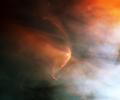
|
-
PIA04227:
-
Orion Nebula and Bow Shock
Full Resolution:
TIFF
(2.805 MB)
JPEG
(61.4 kB)
|

|
1999-12-02 |
Thackeray's Globules
|
Hubble Space Telescope
|
WFPC2
|
1480x1498x3 |

|
-
PIA04223:
-
Thackeray's Globules
Full Resolution:
TIFF
(5.8 MB)
JPEG
(177.7 kB)
|

|
1999-12-02 |
M82 Galaxy
|
Hubble Space Telescope
|
WFPC2
|
1487x1522x3 |

|
-
PIA04218:
-
Galaxy M82
Full Resolution:
TIFF
(5.39 MB)
JPEG
(187.4 kB)
|

|
1999-12-02 |
Galaxy NGC 3079
|
Hubble Space Telescope
|
WFPC2
|
2329x1845x3 |
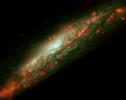
|
-
PIA04209:
-
Galaxy NGC 3079
Full Resolution:
TIFF
(5.519 MB)
JPEG
(351.2 kB)
|

|
1999-12-02 |
Galaxy NGC 3079
|
Hubble Space Telescope
|
WFPC2
|
434x434x3 |
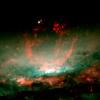
|
-
PIA04208:
-
Galaxy NGC 3079
Full Resolution:
TIFF
(305.3 kB)
JPEG
(22.15 kB)
|

|
1999-12-02 |
Stephan's Quintet,NGC 7319, NGC 7318B, NGC 7318A
|
Hubble Space Telescope
|
WFPC2
|
2400x3000x3 |

|
-
PIA04201:
-
Stephan's Quintet
Full Resolution:
TIFF
(12.15 MB)
JPEG
(521 kB)
|

|
1999-12-01 |
Globular cluster M4
|
Hubble Space Telescope
|
WFPC2
|
1100x1237x3 |

|
-
PIA04231:
-
White Dwarf Stars
Full Resolution:
TIFF
(3.34 MB)
JPEG
(279.1 kB)
|

|
1999-12-01 |
Galaxy NGC 4622
|
Hubble Space Telescope
|
WFPC2
|
853x970x3 |

|
-
PIA04224:
-
Backwards Spiral Galaxy
Full Resolution:
TIFF
(2.485 MB)
JPEG
(97.62 kB)
|

|
1999-12-01 |
Galaxy NGC 1512
|
Hubble Space Telescope
|
WFPC2
Faint Object Camera
Near Infrared Camera
Multi-Object Spectrometer
|
600x650x3 |

|
-
PIA04219:
-
Galaxy NGC 1512
Full Resolution:
TIFF
(972.2 kB)
JPEG
(50.1 kB)
|

|
1999-12-01 |
Horsehead Nebula
|
Hubble Space Telescope
|
WFPC2
|
853x620x3 |

|
-
PIA04215:
-
Horsehead Nebula
Full Resolution:
TIFF
(1.405 MB)
JPEG
(48.75 kB)
|

|
1999-12-01 |
mysterious object
|
Hubble Space Telescope
|
WFPC2
|
3000x2400x3 |
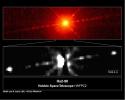
|
-
PIA04214:
-
Mysterious object He2-90
Full Resolution:
TIFF
(6.584 MB)
JPEG
(488.7 kB)
|

|
1999-12-01 |
Globular cluster M22
|
Hubble Space Telescope
|
WFPC2
|
514x600x3 |

|
-
PIA04202:
-
Globular Cluster M22
Full Resolution:
TIFF
(926.4 kB)
JPEG
(94.12 kB)
|

|
1999-12-01 |
Doradus Nebula
|
Hubble Space Telescope
|
WFPC2
|
2508x1790x3 |

|
-
PIA04200:
-
Doradus Nebula
Full Resolution:
TIFF
(12.24 MB)
JPEG
(608.9 kB)
|

|
1999-08-24 |
Jupiter
|
Hubble Space Telescope
|
WFPC2
|
2401x2870x3 |

|
-
PIA01593:
-
Hubble Views Ancient Storm in the Atmosphere of Jupiter - Montage
Full Resolution:
TIFF
(14.35 MB)
JPEG
(423.5 kB)
|

|
1999-08-24 |
Jupiter
|
Hubble Space Telescope
|
WFPC2
|
321x321x3 |
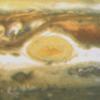
|
-
PIA02402:
-
Hubble Views Ancient Storm in the Atmosphere of Jupiter - June, 1999
Full Resolution:
TIFF
(258.3 kB)
JPEG
(11.79 kB)
|

|
1999-08-24 |
Jupiter
|
Hubble Space Telescope
|
WFPC2
|
321x321x3 |
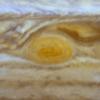
|
-
PIA02401:
-
Hubble Views Ancient Storm in the Atmosphere of Jupiter - April, 1997
Full Resolution:
TIFF
(217.3 kB)
JPEG
(10.36 kB)
|

|
1999-08-24 |
Jupiter
|
Hubble Space Telescope
|
WFPC2
|
321x321x3 |

|
-
PIA02400:
-
Hubble Views Ancient Storm in the Atmosphere of Jupiter - October, 1996
Full Resolution:
TIFF
(219.7 kB)
JPEG
(9.823 kB)
|

|
1999-08-24 |
Jupiter
|
Hubble Space Telescope
|
WFPC2
|
321x321x3 |
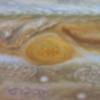
|
-
PIA01599:
-
Hubble Views Ancient Storm in the Atmosphere of Jupiter - October, 1995
Full Resolution:
TIFF
(245 kB)
JPEG
(9.032 kB)
|

|
1999-08-24 |
Jupiter
|
Hubble Space Telescope
|
WFPC2
|
321x321x3 |
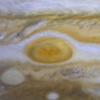
|
-
PIA01598:
-
Hubble Views Ancient Storm in the Atmosphere of Jupiter - February, 1995
Full Resolution:
TIFF
(218.9 kB)
JPEG
(9.833 kB)
|

|
1999-08-24 |
Jupiter
|
Hubble Space Telescope
|
WFPC2
|
321x321x3 |
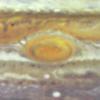
|
-
PIA01597:
-
Hubble Views Ancient Storm in the Atmosphere of Jupiter - August, 1994
Full Resolution:
TIFF
(285.2 kB)
JPEG
(10.9 kB)
|

|
1999-08-24 |
Jupiter
|
Hubble Space Telescope
|
WFPC2
|
321x321x3 |
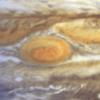
|
-
PIA01596:
-
Hubble Views Ancient Storm in the Atmosphere of Jupiter - July, 1994
Full Resolution:
TIFF
(301.3 kB)
JPEG
(12.4 kB)
|

|
1999-08-24 |
Jupiter
|
Hubble Space Telescope
|
WFPC2
|
321x321x3 |
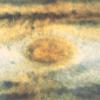
|
-
PIA01595:
-
Hubble Views Ancient Storm in the Atmosphere of Jupiter - May, 1992
Full Resolution:
TIFF
(306.5 kB)
JPEG
(13.83 kB)
|

|
1999-08-24 |
Jupiter
|
Hubble Space Telescope
|
WFPC2
|
718x716x3 |
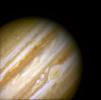
|
-
PIA01594:
-
Hubble Views Ancient Storm in the Atmosphere of Jupiter - Full Disk
Full Resolution:
TIFF
(1.127 MB)
JPEG
(30.32 kB)
|

|
1999-08-23 |
Mars
|
Hubble Space Telescope
|
WFPC2
|
3001x2070x3 |

|
-
PIA01587:
-
A Closer Hubble Encounter With Mars - 4 Views
Full Resolution:
TIFF
(7.258 MB)
JPEG
(270.4 kB)
|

|
1999-08-23 |
Mars
|
Hubble Space Telescope
|
WFPC2
|
800x800x3 |
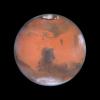
|
-
PIA01592:
-
A Closer Hubble Encounter With Mars - Syrtis Major
Full Resolution:
TIFF
(767.3 kB)
JPEG
(28.49 kB)
|

|
1999-08-23 |
Mars
|
Hubble Space Telescope
|
WFPC2
|
800x800x3 |
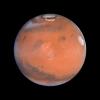
|
-
PIA01591:
-
A Closer Hubble Encounter With Mars - Elysium
Full Resolution:
TIFF
(743.6 kB)
JPEG
(26.86 kB)
|

|
1999-08-23 |
Mars
|
Hubble Space Telescope
|
WFPC2
|
800x800x3 |
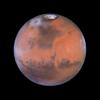
|
-
PIA01589:
-
A Closer Hubble Encounter With Mars - Pathfinder Landing Site
Full Resolution:
TIFF
(833.5 kB)
JPEG
(30.84 kB)
|

|
1999-08-23 |
Mars
|
Hubble Space Telescope
|
WFPC2
|
900x450x3 |
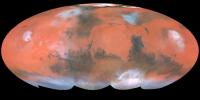
|
-
PIA01588:
-
A Closer Hubble Encounter With Mars - Global View
Full Resolution:
TIFF
(894 kB)
JPEG
(33.76 kB)
|

|
1999-08-23 |
Mars
|
Hubble Space Telescope
|
WFPC2
|
800x800x3 |
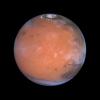
|
-
PIA01590:
-
A Closer Hubble Encounter With Mars - Tharsis
Full Resolution:
TIFF
(783.2 kB)
JPEG
(26.36 kB)
|

|
1999-05-21 |
Uranus
|
Hubble Space Telescope
|
WFPC2
|
1074x737x3 |
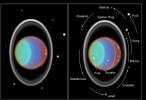
|
-
PIA01278:
-
Hubble Tracks Clouds on Uranus
Full Resolution:
TIFF
(777.6 kB)
JPEG
(60.06 kB)
|

|
1999-05-21 |
Neptune
|
Hubble Space Telescope
|
WFPC2
|
720x730x3 |

|
-
PIA01542:
-
Neptune's Stormy Disposition
Full Resolution:
TIFF
(610.8 kB)
JPEG
(37.55 kB)
|

|
1999-05-21 |
Mars
|
Hubble Space Telescope
|
WFPC2
|
3000x1850x3 |

|
-
PIA01543:
-
Martian Colors Provide Clues About Martian Water
Full Resolution:
TIFF
(5.11 MB)
JPEG
(230.4 kB)
|

|
1999-05-21 |
Io
|
Hubble Space Telescope
|
WFPC2
|
3000x1930x3 |
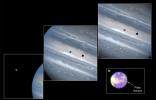
|
-
PIA01540:
-
Hubble Clicks Images of Io Sweeping Across Jupiter
Full Resolution:
TIFF
(6.217 MB)
JPEG
(285.7 kB)
|

|
1999-05-21 |
Mars
|
Hubble Space Telescope
|
WFPC2
|
2827x1723x3 |

|
-
PIA01545:
-
Hubble Views Colossal Polar Cyclone on Mars
Full Resolution:
TIFF
(5.289 MB)
JPEG
(246.7 kB)
|

|
1999-05-21 |
Moon
|
Hubble Space Telescope
|
WFPC2
|
1125x754x1 |
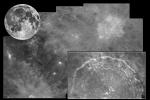
|
-
PIA01541:
-
Crater Copernicus
Full Resolution:
TIFF
(664 kB)
JPEG
(100.7 kB)
|

|
1999-05-18 |
Venus
|
Hubble Space Telescope
|
WFPC2
|
170x248x3 |

|
-
PIA01544:
-
Venus Cloud Tops Viewed by Hubble
Full Resolution:
TIFF
(48.41 kB)
JPEG
(3.494 kB)
|

|
1999-01-06 |
|
Hubble Space Telescope
|
WFPC2
|
1215x1241x3 |

|
-
PIA14443:
-
Looking Down a Barrel of Gas at a Doomed Star
Full Resolution:
TIFF
(4.525 MB)
JPEG
(65.37 kB)
|

 Planetary Data System
Planetary Data System





















































































































